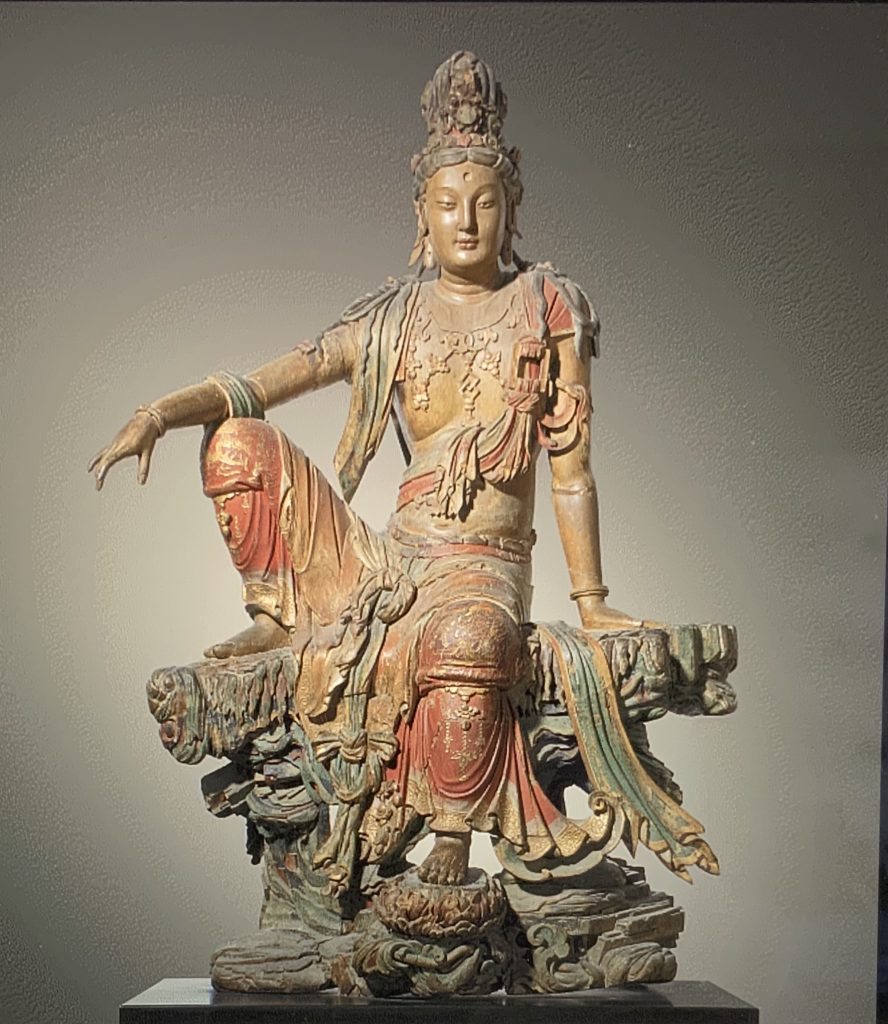
On October 3, 2021, we finished reading the text of Shantideva’s “A Guide to the Bodhisattva’s Way of Life.” It was decided that we should spend some more time on digesting and teasing the truth out of what we read. Baima Gabu and Reba Jinbo volunteered to set up a structured method for those of you who wish to continue with the class to volunteer to take portions of the text and explain it in their own words and how it applies to both their cultivation and practice as well as what insights it gave them in more general (or specific) terms. To date we have covered the main chapters with the famous Chapter nine to go.
Chapter nine is a challenge and while the other chapters are pure poetry and presented in verse, most of the ninth chapter is presented in prose in the form of a dialogue between the Madhyamika school and other Buddhist and non-Buddhist traditions. Most of the commentary by the 12th century Tibetan lama Thog-me Zangpo has been included for the sake of clarifying the often cryptic style of the root text. Baima and Reba have devised a framework for our investigation of this chapter on “Wisdom” with different students taking the position of the Madhyamika School; the Chittamatrins or Mind-Only School; the Hinayana Shravaka School; The Hindu Vaibashika or hetuveda, the Samkya, and the Naiyayika Schools; the Realist School; and the Charvaka or Materialistic School.
Another student will present the “results of wisdom,” but there are still three topics that need volunteers to refute: “Recognition of the Nature of Wisdom (deceptive and ultimate truths)”; “Identitylessness (of person and phenomena)”; and “Apprehension of True Existence (of subject/object, cause, or effect)”. If you would like to join this discussion, please let Reba or Baima know and pick a refutation that speaks to you and please present it in your own words, being sure to include how this refutation can be used today to help bring others to the true Buddha-Dharma. Since we will not meet again until November 14, you have time to read Chapter nine and prepare your position.
If you do not want to present yourself, you may still attend and listen and comment on their presentations. This really follows part of the Seven-Dharma method or system for learning and propagating the Dharma ( http://holyvajrasana.org/buddhist-practice/the-seven-dharma-system-of-listening-to-dharma-discourses) given us by our Buddha Master which we have used before and will use at our “Learning from Buddha College and Seminary,” which I am currently working on.
There will be no zoom sessions for the next two weeks, but they will resume on December 19 at 2:00 pm. If you would like to read the text and join the discussions and have not already done so, you will need to register to attend on ZOOM. The Stephen Batchelor translation, which I believe was the first published English translation from Tibetan sources of this beautiful teaching on the core principles of Mahayana Buddhism using the six paramitas as followed by the Bodhisattvas, will be our core text. It is available on the internet and on the Holy Vajrasana Temple website, but many other versions are currently in print taken from both Tibetan and Sanskrit sources, which we will also use.
CLICK for the link to enable you to register for the course. The course will take as long as it takes, but this ZOOM link should be good for all classes in this series.
The available translations that we will use as references are listed below including a link to the downloaded version of the Batchelor translation. This is one of the Classic Buddhists texts that our Buddha Master has encouraged us to study and understand AND apply to our practice.
A Guide to the Bodhisattva’s Way of Life (Bodhisattvacharyavatara), translated by Stephen Batchelor in 1979 from Tibetan sources using commentary The Ocean of Good Explanation by the 12th century lama T’ogme Zang-po as taught by Geshe Ngawang Dhargyey. Available on internet and HERE.
A Guide to the Bodhisattva Way of Life, translated by Vesna and Alan Wallace in 1997, from Sanskrit but with reference to the Tibetan and with the Tibetan variants given in footnotes.
The Way of the Bodhisattva, Revision published in 2006 of a 1997 translation by Padmakara Translation Group; based on Tibetan sources and commentary by Nyingma master Khenpo Kunzang Pelden (1872-1943).
The Bodhicaryavatara, translated by Kate Crosby and Andrew Skilton (Oxford University) from surviving Sanskrit text in 2008.
Bodhicaryavatara with Commentary by Sakya Patriarch Sonam Tsemo (1142-1182), translated by Adrian O’Sullivan, the director of the Sakya Samten Ling Buddhist center in Santa Monica, CA, in 2019.
Entering the Way of the Bodhisattva: A New Translation and Contemporary Guide, translated with commentary by Khenpo David Karma Choephel, main English translator for Venerable Kenchen Thrangu Rinpoche in 2021; based on Tibetan sources.



Add comment